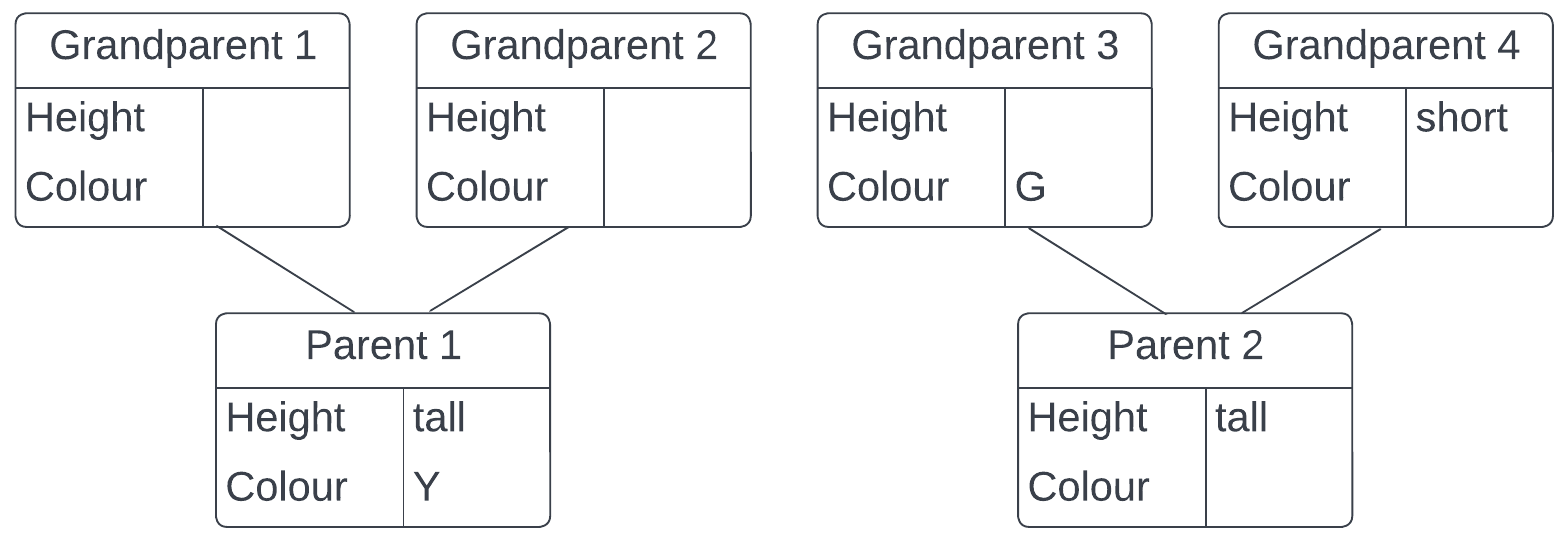Or search by topic
Number and algebra
Geometry and measure
Probability and statistics
Working mathematically
Advanced mathematics
For younger learners
Peas in a Pod



Experiments with true-bred green and yellow pea plants led him to conclude that each parent contributed either a G or a Y characteristic (gene), and that G is dominant over Y, so that GG, GY, and YG plants all appear green, and only YY plants appear yellow. He concluded that crossing a GG plant with a YY plant would result in offspring which all appeared to be green. However in the following generation, a GY or YG plant could give its offspring a Y gene rather than a G one. If the GY or YG plant was cross-bred with a YY plant, not all of the offspring would be green.
Coola breeds pea plants. She plants a pea and thinks about its family tree.

Coola knows that there is a small chance the plant will be the same height and colour as grandparent 1, but it is more likely it will be the same height and colour as parent 1. She knows it won't be the same height and the same colour as grandparent 3.
1. Can you determine the colour of parent 2?
2. Can you describe the height of grandparents 1 and 2?
3. How likely is it that the pea will grow into a short yellow plant?
4. How likely is it that the plant will be green?
You may also like
Gambling at Monte Carlo
A man went to Monte Carlo to try and make his fortune. Is his strategy a winning one?
Marbles and Bags
Two bags contain different numbers of red and blue marbles. A marble is removed from one of the bags. The marble is blue. What is the probability that it was removed from bag A?
Coin Tossing Games
You and I play a game involving successive throws of a fair coin. Suppose I pick HH and you pick TH. The coin is thrown repeatedly until we see either two heads in a row (I win) or a tail followed by a head (you win). What is the probability that you win?

